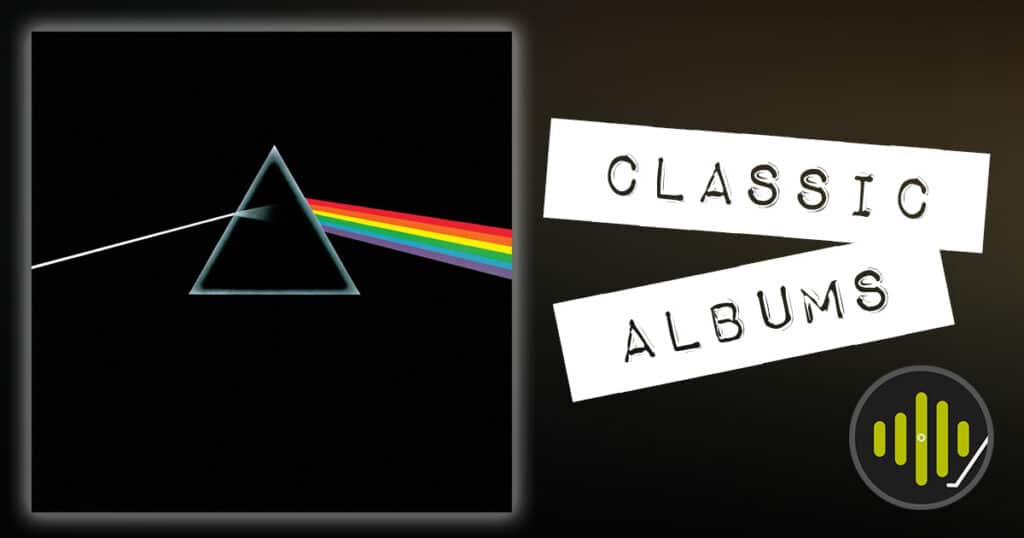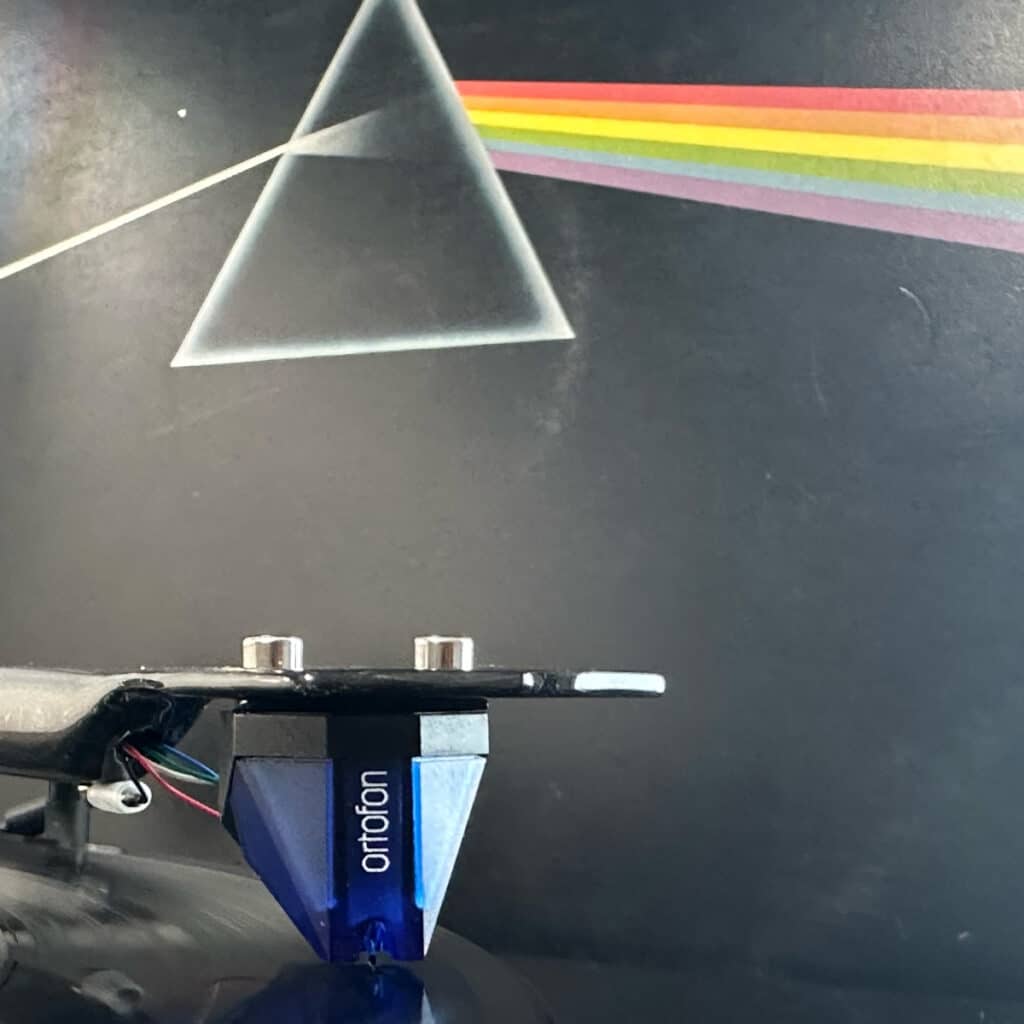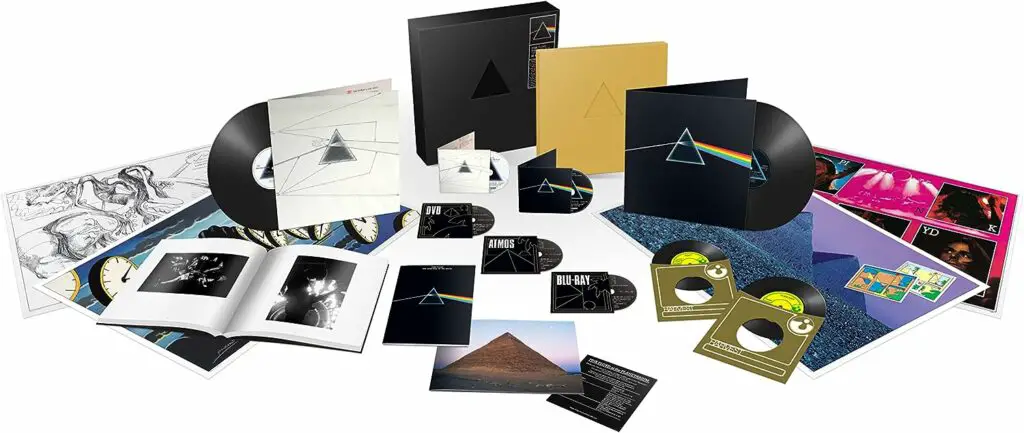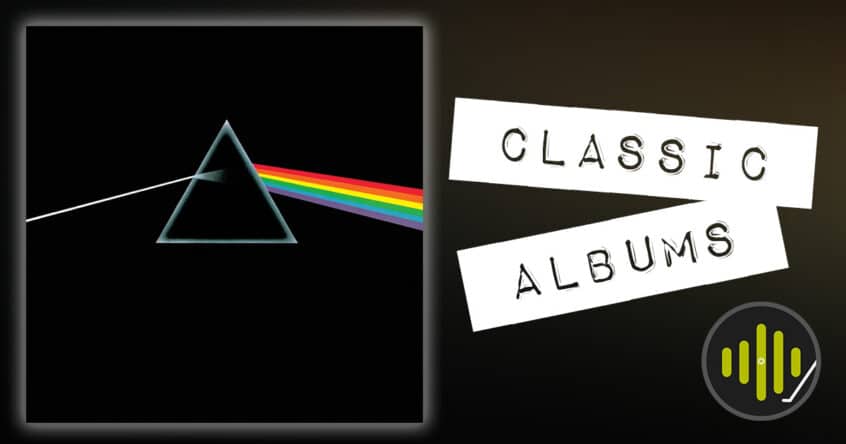Few albums can claim the massive success, long-lasting appeal, and songwriting quality of Pink Floyd’s Dark Side of the Moon. Every song is a hit. It helped Pink Floyd soar to a new level of success and popularity that hasn’t waned even though it was released 50 years ago.

Prior to 1973, Pink Floyd was regarded as the best psychedelic rock band in the world. Despite shifting musical tastes, the death of the hippie movement and the “swinging 60s” where most psychedelic rock bands found their footing, they continued to breathe new life into a subgenre that had become stale.
The band was obsessed with diving head-first into the unknown. “We’re trying to solve problems that haven’t existed before,” bassist and co-vocalist/songwriter Roger Waters said to British magazine Melody Maker. They combined sound and visuals in ways other bands couldn’t keep up with. And Waters had grand ambitions even before the band began production on what became one of the best-selling albums of all time.
Us and Them
Pink Floyd was in an uncomfortable place as the 60s gave way to the 70s. Still reeling from the absence of their creative leader and frontman Syd Barrett, they hadn’t released a single in many countries since 1968 – the same year Barrett would exit.

They were at odds with their label Capitol Records, and they were working with their management on a new deal with Columbia. They had one more album to fulfill their obligation to Capitol, and despite the label’s best efforts to devote as much of a marketing push as possible to promote Dark Side of the Moon they would eventually move to Columbia in early 1974.
When Waters became the de facto leader of the band in the wake of Barrett’s departure, he wanted to bring the material back into the atmosphere with a focus on social, political, and philosophical topics.
By the time it came around to laying the record down, the band was in a bit of a listing period in the five years between Barrett’s exodus and the release of the album. Their records weren’t selling. But their concerts were becoming more grandiose, and they were coming back to life without their long-lost leader.
During a gig that lives in rock infamy, the band attempted to play the album that became Dark Side of the Moon (then going by the moniker Eclipse) in full in early 1972, a year before it was released. But due to their mammoth sound and lighting rigs, they overpowered the venue’s systems. The same thing happened a few weeks later.
They were already larger than life.
Time
When the band stepped into what was then called EMI Recording Studio (now Abbey Road) in the spring of 1972, the material for the album was already forged through their live performances for more than a year. This meant production time could be dedicated to experimenting with sounds, techniques, and ideas.
This was unheard of for a “concept” album at the time, which usually comes to life within the safe harbor of the recording studio – not in front of live audiences. But it was just another way Pink Floyd proved they were different.
Considering the epic scope of the song material, the band only spent two months in the studio creating it. Waters and Gilmour were at odds with their vision of the final product, with Waters envisioning a drier sound and Gilmour asking for as wet and humid as an early 70s mix could get.
Pink Floyd was right at home at EMI Studios, and the band and production team used multiple cutting-edge (at the time) production techniques and equipment to bring Dark Side of the Moon to life. Alan Parsons, who had an impressive list of credits and worked with the band previously, was appointed staff engineer.
Always pushing technological boundaries, the record was cut on a 16-track console. Though this wasn’t enough on its own to fully contain the tracks, it was a good starting point. Parsons made good use of recording techniques to give the album its grandeur, including the double-tracking of guitars and vocals, flanging, inventive touches of reverb, and interesting use of panning.
The band and production team experimented with synthesizer models like the EMS VCS 3 on “Brain Damage” and Synthi A. The Synthi A was used on some film scores the band recorded previously. It was one of the most exciting synthesizers of the time, and offered some early sequencing capabilities. Waters loved how inorganic it sounded, and the band put it to good use on the tracks “On the Run” and “Time”.
One of the record’s sonic signatures is the innovative use of spoken word tracks and sound effects (musique concrete) throughout the album. These include the analog tape loops of “Money”, the sound of the assistant engineer running around the echo chamber for “On the Run”, ticking clocks, and a kick drum processed to sound like a human heartbeat that bookends the album.
Though Syd Barrett left the group five years before the album’s release, the members of Pink Floyd were still dealing with their former frontman’s periodic descent into madness. There are allusions to it throughout the record and ones that followed, like The Wall. It’s this homage to Barrett’s grand ideas that gives Dark Side of the Moon an underlying sense of melancholy.
In the album-oriented rock era the record stands as a cohesive musical masterpiece, with each track flowing seamlessly into the next.
Money
The band intended the album to be a holistic experience. Sounds, visuals, packaging, and production all intertwined into a singular journey through the sonic cosmos. Dark Side of the Moon was an album, not just a sequence of songs. And the music industry at the time was more than ready for it. In 1972, the band was playing in large theaters. A few years later, they were packing the biggest arenas.
Bands just weren’t doing what Floyd was at the time. Loops, sequencing, genre fusions, pushing recording production boundaries like they were. If the Beatles took recording innovations into the diamond sky, Floyd catapulted them into the stratosphere. And it still sounds ahead of the times, half a century later.
The songs’ laid-back tempos and grand use of dynamics can be considered cinematic at a minimum. Further adding to the mystique around the band was their aversion to the press, which began with their first taste of fame when signing with EMI in 1967.
It reached the Number 1 spot on the Billboard chart in the USA for a week in April of 1973, but that was just the beginning of the success to come. It would go on to chart for a total of 981 weeks over the course of the next 15 years, becoming the best-selling album of the 1970s and the fourth best-selling in history.
To commemorate the album’s 50th anniversary a box set was released in March 2023.

Any Colour You Like
Dark Side of the Moon showcases the different but complementary songwriting prowess of David Gilmour and Roger Waters. It’s often considered Pink Floyd’s greatest accomplishment, high praise considering the quality of albums that succeeded it.
Waters described the album as the eternal battle between the light and dark, an allegory for Barrett’s psychological struggles and almost foreshadowing the push and pull Waters would find himself in with Gilmour as they wrestled over creative direction.
In a way, the material can be interpreted as a commentary on the death of the counterculture movement. A war ultimately lost to the unavoidable aspects of earthly life; birth, lifetime, money, politics, aging, and ultimately passing on to the great gig in the sky.
Though Waters would leave the band in 1985, Dark Side of the Moon was the launching point for many successful years to come. Even without Waters, their “Momentary Lapse of Reason” tour was the highest-grossing concert tour of the 1980s.
It’s easy to talk about vanity metrics. Hundreds of weeks on the album charts. 24.8 million copies confirmed sold worldwide, though the suspected number is actually upwards of 45 million. But beyond the money and myths is a record that truly stands the test of time and consistently makes “best album lists” half a century after its release-particularly among the vinyl community.
The crossover appeal it has is one of the reasons it’s a timeless listen across generations of music fans. Not just for fans of progressive music, psychadelia, or “art rock,” it connects to the listener on a cosmic level of consciousness.
The record has been reissued in different variations over the years. So much so that per Discogs there are more than 1,000 editions. These include different packaging, posters and stickers, alternate mixes like quadrophonic and surround sound, the list goes on.
Eclipse
To refer to Dark Side of the Moon as merely a concept album is reductive. It’s a melodic paraphrase, a soundtrack in sync with after the acid is taken but hasn’t fully kicked in yet. Somber, poignant, and interstellar.
The “dark side” of the moon is a colloquial description for the scientific term “far side of the moon”, the hemisphere facing away from the sun. But it’s also a reference to where their former band leader’s mind had gone, never to return. It’s a coda to one era of the band and a bold proclamation of the creative heights their new direction would take them.
Pink Floyd had already built a name for themselves throughout the late 60s and early 70s, but it was on Dark Side of the Moon that the band, as the world knows them today, came to life. A true classic rock album, and essential to any vinyl collection.
BUY THE ALBUM
About the Guest Contributor:
Brandon Stoner is a lifelong musician and audio engineer who owns more guitars than anyone needs. As a lover of all things writing and music technology, he crafts every piece with his dog Max on his lap.




Having been drafted spring of 1972, I took the option of enlisting in the USAF. Stationed at Barksdale in Shreveport Louisiana, I had received orders for TDY (Temporary Duty) to Matagorda Island Air Force Range off the coast of Texas. I picked up Dark Side on Cassette as I couldn’t take my stereo system. Most personnel ferried to and from the island daily, leaving about 35-50 guys living on the island. We “enjoyed” our nightly freedom. I remember cranking Dark Side up and just being enveloped by the sound and surroundings. Only 50 years ago!
Thanks Chris. Nice to hear everyone share their stories and memories of first hearing this album. Happy spinning!
I don’t know what it is about this album but it is one of my favorites and has stood the test of time for me.
A true classic 🙂
The first time I heard Dark Side of the Moon was in a Transit van equipped with large speakers in the back on a ride I hitched from Italy into Switzerland with two guys. The album played as dawn broke in Switzerland and as we drove past mountains on our left with clouds cascading down their sides. It was a magical introduction that will stay with me until my dying breath.
Really cool story, Peter. What an experience! Thanks for sharing
Great short review on what many, myself included, consider the greatest album of all time. I have at least 6 vinyl versions. A 1st UK pressing, a MOFI, 40th anniversary and the current 2023 box set. I even have a quadraphonic version. The 5.1 surround sound version is wonderful. I am missing the 30th anniversary. The Pulse vinyl/cd/dvd version is tremendous.
Agreed, Tony – a superb classic. Which version do you like the best?